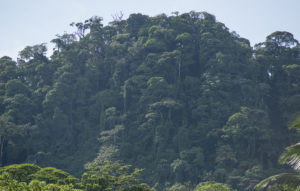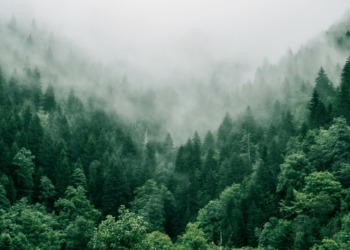If you’ve seen recent headlines, you would think we are losing our first line of defence against climate change. According to the Economist, “The world is losing the war against climate change.” The Washington Post recently posited: “This is the day that the climate change fight was lost for another generation.” The Telegraph recently rang the alarm that: “Runaway climate change could trigger Hothouse Earth.” As these headlines indicate, the urgency to act in averting catastrophic climate change is immense, however, the battle is far from being lost.
Among our arsenal – forests stand as a critical, yet undervalued weapon in our fight against climate change. Forests constitute an economically viable means to both reduce carbon emissions and also increase carbon sinks and as such are our first and scientifically proven line of natural defence against climate change.
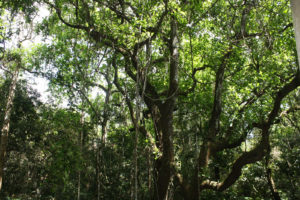
IN THE PHOTO: Forest in Panama PHOTO CREDIT: UN-REDD Programme
The international community, through the establishment of Sustainable Development Goals (SDGs), and in particular SDG15, has recognized there is no solution to climate change without forests and has set an ambitious and critical window of opportunity for us to act. Intrinsically, SDG 15, underscores the importance of forests in supporting human livelihoods and achieving the 2030 Agenda. With less 500 days left to achieve the goal of halting deforestation and promoting sustainable forest management by 2020 (SDG target 15.2), the onus is on all of us to mobilize and take action at the scale and pace necessary to achieve this ambitious target. We need to do this in order to not only keep forests standing but also lessen dangerous climate change impacts and work towards the Paris Agreement goal of keeping global temperature rise to well below 2 degrees Celsius.
Why Forests?
Forests are life. They provide shelter, a haven for wildlife, regulate water systems, prevent natural disasters such as floods, provide access to food and so much more. Forests – as seen through SDG 15 – are intrinsically linked to delivering a number of other Sustainable Development Goals including poverty eradication (SDG 1), food security (SDG 2), clean water (SDG 6), responsible consumption and production (SDG 12), climate action (SDG 13) and life below water (SDG 14). Yet the reality is that deforestation is playing a substantial role in threatening development objectives. For example, agricultural productivity – a key to ending hunger – is negatively impacted by accelerated soil erosion as a result of deforestation. As such, forests play a critical role in the achievement of multiple SDGs and greater efforts need to be made to ensure that forests continue to contribute to those goals in an integrated and cross-sectoral manner.
IN THE PHOTO: Forest in Costa Rica. PHOTO CREDIT: UN-REDD Programme
It is undeniable that forests serve as a natural buffer to a changing climate and are a key part of the solution. By halting and reversing tropical deforestation, we could deliver a large part of the natural climate solutions – around a third of the total emission reductions needed to avoid dangerous climate change. While the current emissions gap – the difference between the reductions in greenhouse gases that are needed and the reductions that countries have pledged to make – is significant, forests have a major role to play in closing that gap. According to the UN Climate Change Lima Hub, 6.3 gigatons (billion tons) of REDD+ emission reductions have been reported over the last six years. This is equivalent to more than the annual emissions of Europe or the United States.
While the benefits of forests are recognized, the reality on the ground couldn’t be starker. Every minute, the equivalent of 40 football fields worth of forests is lost to deforestation. Annually, this translates into the destruction of an area of tropical forest the size of Austria. FAO estimates that between 1990 and 2015, approximately 129 million hectares of forests were lost, mainly due to demand for cash crops such as oil and soya and cattle ranching. This rampant deforestation and degradation have led forests to become a source, rather than a sink, of carbon emissions. Recent studies indicate that tropical forests lost 425 million tonnes of carbon per year from 2003 to 2014.
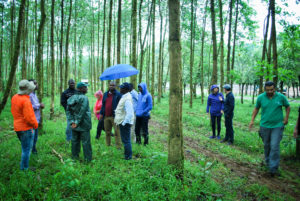
IN THE PHOTO: Forest in Côte d’Ivoire. PHOTO CREDIT: UN-REDD Programme
And yet, there is still time to reverse these trends. Almost all forest degradation is caused by humans and can be reversed if we act now. So what needs to happen?
The Way Forward
If we bend the emissions curve in the next couple of years, we still have a chance to reduce the dramatic impacts of climate change. While the window may be short, it does exist. In 2020, countries are expected to review and raise their national pledges under the Paris Agreement, and thus become a bigger part of the solution. The UN Strategic Plan on Forests and the SDGs both recognize the critical role forests play in mitigating climate change and achieving sustainable development. Critically, we know how to reduce emissions from forests. We have shown it can be done at a modest cost and with great sustainable development benefits, protecting the interests of the poorest and vulnerable people in developing countries.
Forests are the fastest, cheapest and most immediate means of tackling climate change, with great benefits for many of the world’s poor and most vulnerable who depend on them for their livelihoods. For example, restoration can create benefits that far exceed its costs. For every dollar spent restoring degraded forests, as much as 30 dollars can be recouped in economic benefits and poverty reduction.
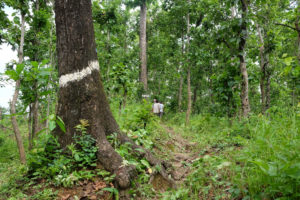
IN THE PHOTO: Forest in Nepal. PHOTO CREDIT: UN-REDD Programme
We have a unique opportunity to scale up the action and achieve significant impact. However, this requires a business ‘unusual’ approach through the adoption and promotion of cross-sectoral partnerships.
The UN-REDD Programme, a joint initiative between UN Environment, UNDP and FAO, has worked with 64 countries, the private sector and civil society since 2008 to reduce carbon emissions from forests while advancing sustainable development. Building on the power of collaboration, we have helped countries develop plans to reduce deforestation and related emissions. As a result, forest governance has become more transparent and measures to protect forests and reduce emissions have been integrated into national development plans, climate strategies and laws.
As a first global UN joint program on climate change, the UN-REDD Programme has supported countries in developing multi-stakeholder partnerships to reduce emissions from deforestation. Building on 10 years as the largest pooled UN Climate Change partnership, the UN-REDD Programme, will continue to assist countries as they work towards achieving systemic and sustainable change at scale towards the Paris Agreement.
Winning the Battle
When stakeholders work together across sectors and at scale, transformational change is possible. But it is a race against the clock. We need to step up the scale and pace of our partnerships to achieve the SDGs and the Paris Agreement goals.
IN THE PHOTO: Forest in Costa Rica. PHOTO CREDIT: UN-REDD Programme
The onus is on all of us to meet this challenge by unlocking untapped resources. The outcomes of the recent California Global Action Summit further underline that in order to “reach a net-zero emissions society, we must move beyond a single company, a single sector or city, or a single country,” and that we must “must bring society together to collectively and urgently address climate change and identify innovative measures to do so.” The UN Secretary-General’s Climate Summit in September 2019, almost exactly one year from now, is a key milestone. Natural climate solutions, including forests, have already been identified as one of six focal areas. In his announcement of the summit, the UN Secretary-General noted the need for the adoption of “collective measures” and a “redefinition of development” in order to address “the biggest systemic threat to humankind.”
Together we can rise to the challenge, and with the help of forests, win the battle.



